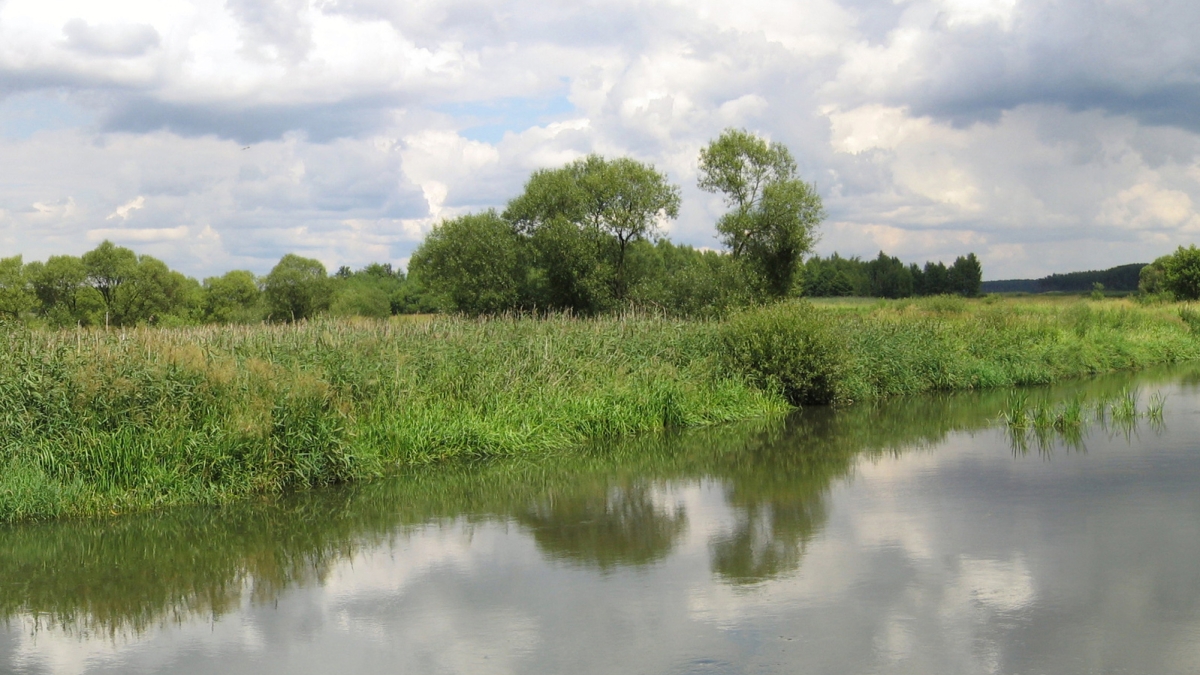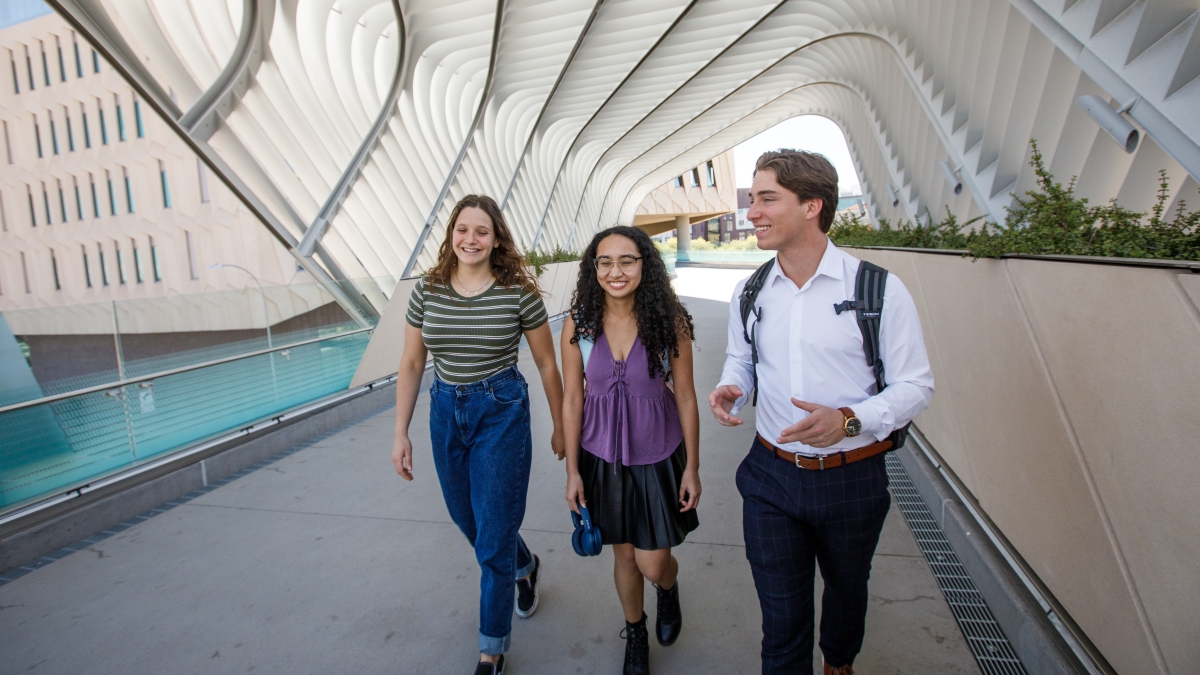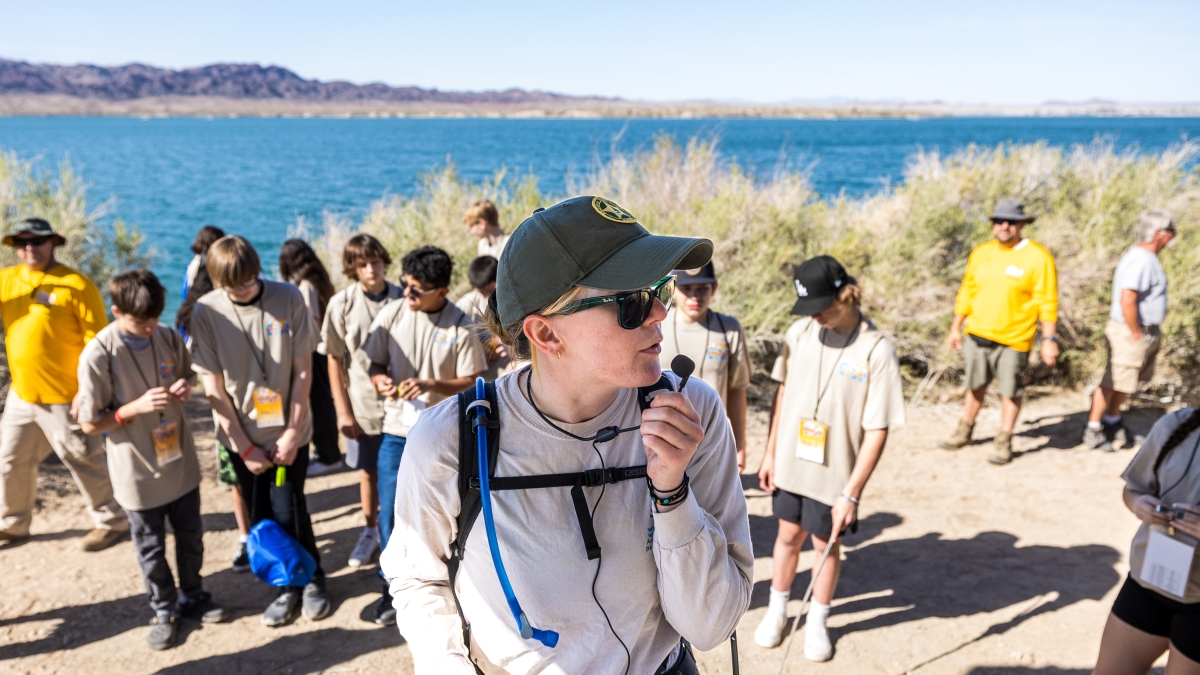Balancing conservation with commerce
Dow Chemical among first corporations considering ASU water tool that helps protect environment and the bottom line

Sustainability looks good for corporations these days.
Starbucks, Procter & Gamble and Coca-Cola all tout their contributions to combating climate change, saving wildlife and replenishing water sources.
But corporations sometimes need help becoming sustainable.
A revolutionary new tool developed at Arizona State University can help corporations apply analytics to how they use water, simultaneously helping water conservation, habitat restoration and their bottom line.
Unveiled last month in Paris, the water decision tool is in consideration to be adopted by Dow Chemical at its Texas operations on the Brazos River.
“We believe there’s not only value to doing this for nature and society, but we have a goal to recoup a billion dollars over the next decade,” said Mark Weick, director of the sustainability program office at Dow.
The Green Infrastructure Support Tool was developed by John Sabo, a professor in the School of Life SciencesThe School of Life Sciences is an academic unit of ASU's College of Liberal Arts and Sciences. and a faculty member of the Center for Biodiversity Outcomes.
“It tells Dow how to meet their water bottom line for manufacturing by creating wetlands instead of creating gray infrastructure,” Sabo said. Gray infrastructure refers to built solutions, such as dams or retention basins.
“It allows them to site places where they would gain water by restoring what might be currently farmland or something else, or maybe it’s diked and the water can’t get there,” said Sabo, who is also a senior sustainability scientist in the Julie Ann Wrigley Global Institute of Sustainability. “In a basin context, the water gets slowed down by those wetlands and then later in the year when the reliability of water is low and flows are low, the reliability is higher.
“What we’re trying to eventually do with them is to combine that green infrastructure concept with the gray that’s existing so that maybe they could store the extra water they slow down from floods.”
Dow operates a large plastics and specialty chemicals plant in Freeport, Texas, on the Brazos River. It is highly dependent on the river, the flow of which varies widely. During the huge floods that swept through parts of Texas last year, Dow reps told Sabo more water flowed past their plant in two days than they use all year.
“We’re very interested in tools that will potentially lead to projects that will improve water flow down the river,” Weick said. “This software is a great tool to evaluate how the water flows in the river.”

There are many places where wetlands can be restored, but it isn't always economically viable. Finding where it would be best for meeting the bottom line is part of what the ASU water tool does. Photo by Adrian Lynch
One example of an existing sustainable solution was the construction of a wetland beside Dow’s plant along the Gulf Coast in Seadrift, Texas. Instead of building a wastewater treatment plant, Dow restored a wetland that did the job of a treatment plant — by filtering wastewater through cleansing grasses and the like. It recouped $200 million out of an initial cost of $2 million. The wetland requires no maintenance and is far more effective than a plant.
“That shows us the kind of value of this kind of tool,” Weick said. “We want to do more projects like that. This software has the potential to be used as a screening tool to evaluate the viability of projects like that.”
The non-profit Earth Genome approached the Center for Biodiversity Outcomes and asked them to provide the science. Earth Genome’s goal is to enable key institutions to account for natural capital in decision-making. The organization connects scientists and technology providers to governments, corporations and investors.
The non-profit’s current focus is on water. It is creating decision-support tools for executives in corporate operations, supply chains and financial services, addressing questions such as, “What are the most cost-effective green infrastructure investments I can make to mitigate water-quantity and -quality issues at my facility?”
“We fancy ourselves that this will trigger a new way of thinking and mass adoption, but we don’t know yet,” said Earth Genome co-founder Glen Low. The potential impact of being adopted by massive multinational corporations like Dow is huge, Low said.
“If you could redirect private capital to the same goal, it could be an order of magnitude bigger than what conservation organizations do today,” he said. “It’s all about scale.”
Sabo said the collaboration with Earth Genome was great.
“They know business-speak, and scientists typically don’t know business-speak, so it’s been a great opportunity,” Sabo said.
The tool puts a dollar value on restoration comparing it with gray infrastructure. For instance, there are lots of places where wetlands can be restored, but only a few are economically viable and will meet the bottom line better. Finding where it would be best to invest in green infrastructure is what the tool does. One layer in the tool shows the parcel level of ownership in the Brazos watershed.
“Likely the restoration sites will be agricultural land with poor return,” Sabo said.
“It’s not only the world-class science, it’s breaking the mold. … When you combine business with science, and you put a financial wrap on it, all of that is innovative.”
— Glen Low, co-founder of non-profit Earth Genome
Dow is in the early stage of testing the tool. It will apply the software to the Brazos and look at enhancing water management strategies.
“We’ve so far been providing user feedback,” Weick said. “The tool has the potential for some really wide applicability in solving problems.”
Seven global corporations expressed interest in the tool when it was unveiled last month at the World Business Council for Sustainable Development in Paris, including Unilever, Monsanto and Indian mega conglomerate Tata.
“We built the tool for all of those companies,” Low said. “We just piloted it in the Brazos. … (Dow has) done things no one else has done. We wanted to make sure whatever we did advanced whatever they had done.”
Dow “has other places we could roll this out after we demonstrate its usefulness here,” Sabo said. “We’re working very closely with them to try to define a need that will be transportable to other basins and other companies.”
Hongkai Gao, a postdoctoral research associate, worked with Sabo and contributed the hydrological work on the tool.
Low said Earth Genome is excited about the tool’s potential.
“We’ve been super pleased working with John and Hongkai,” he said. “They’ve done a tremendous job. It’s not only the world-class science, it’s breaking the mold. We appreciate them being out on the skinny branch with us. … When you combine business with science, and you put a financial wrap on it, all of that is innovative.”
Sabo is pleased to see his work having an immediate, measurable impact on the environment.
“I like this because corporations can make things happen fast,” he said. “You know your science is going to lead to a solution fast.”
More Environment and sustainability

Confusion complicates US recycling efforts
In most major cities and buildings, recycling bins can often be found alongside trash bins in an effort to encourage recycling. But is it working? According to the U.S. Environmental Protection…

ASU empowers students to build a thriving global future
At Arizona State University, leadership has made tremendous efforts to create programs and initiatives aimed at supporting a healthy planet and thriving future for all life — and now, more than ever…

Colorado River becomes an outdoor classroom for these middle school students
Griffin Freburg doesn’t usually look forward to science class. But on a sunny day in March, the eighth grader changed his tune. Concepts that were usually explained in long paragraphs in a textbook…